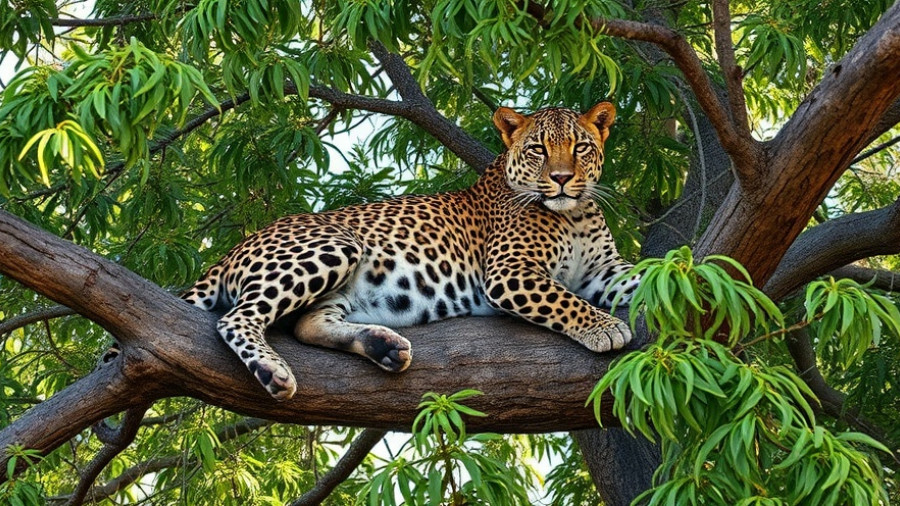
The Fascinating Carnivores of Tanzania
Tanzania's landscapes are a living canvas where some of the world’s most impressive carnivores paint their stories of survival and predation. The presence of iconic big cats and hidden hunters serves as a vivid reminder of the untamed spirit of nature.
Leopards: Stealthy Ambush Masters
The elusive leopard, a true master of camouflage, thrives in Tanzania's diverse ecosystems. These solitary hunters can often be spotted in the dense woodlands of Tarangire and the grassy plains of Serengeti National Park. Leopards are known for their methodical hunting style, choosing times when their prey is most vulnerable. Witnessing one snatch its meal and hoist it into the safety of the trees is an unforgettable sight. In Serengeti, leopards use their rosetted coats to blend seamlessly into the tall grasses, making them one of the most challenging predators to observe.
Lions: Majestic Kings of the Savannah
As the kings of the African savannah, lions are social animals that live in prides, creating a complex hierarchy essential for hunting and protecting their territory. Tanzania is particularly renowned for its large lion populations, especially in the Serengeti and Ngorongoro Crater, where observing their cooperative hunting strategies offers invaluable insights into their social structures. Many visitors are enthralled by the sight of a pride cohesively strategizing an ambush on a herd of wildebeest, showcasing that the strength of numbers is just as crucial as the individual prowess of these magnificent beasts.
Cheetahs: Speed Personified
Considered the fastest land animals, cheetahs have evolved unique physical traits that allow them to reach astounding speeds of up to 70 mph. Unlike their big cat relatives, cheetahs rely on their speed and sight rather than stealth. The vast open expanses of the Serengeti are ideal settings for their breathtaking chases, as they stalk gazelles and spring into action with incredible acceleration. Witnessing a cheetah in full sprint is not just a highlight of any safari, but a vivid reminder of how evolutionary adaptations contribute to survival.
The Smaller Giants: Servals and Caracals
While not as famous as their larger counterparts, the serval and caracal are worth mentioning. Servals, with their long legs and huge ears, are skilled hunters of small game, including rodents and birds. Their unique hunting technique involves impressive vertical leaps that allow them to catch birds mid-flight. Caracals, with their distinct tufted ears, also display extraordinary agility, often taking their prey by surprise with impressive leaps. These smaller cats remind us that Tanzania's savanna is a complex ecosystem filled with diverse hunters, each playing a unique role.
Conservation Challenges and Efforts
The existence of Tanzania's formidable carnivores is threatened by habitat loss and human-wildlife conflict. Conservation organizations actively work with local communities, employing strategies to mitigate these issues and promote coexistence. Ethical tourism also plays a crucial role in supporting these efforts. Responsible safari practices not only provide a sustainable economic model but also facilitate the conservation of these majestic creatures in their natural habitats.
Conclusion and Invitation to Explore
From the elite big cats to the charming smaller predators, Tanzania is an ecological treasure trove for wildlife enthusiasts and adventurers alike. As you plan your journey to witness these awe-inspiring carnivores, consider supporting initiatives that prioritize both conservation and enriching local communities. Join the exciting quest to experience firsthand the intricate tapestry of life among the carnivores of Tanzania.
 Add Row
Add Row  Add
Add 




Write A Comment